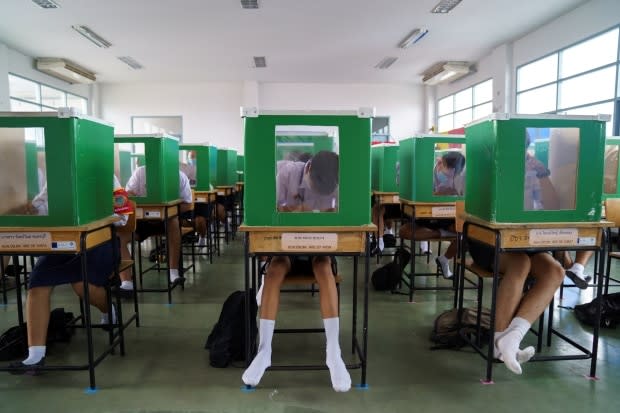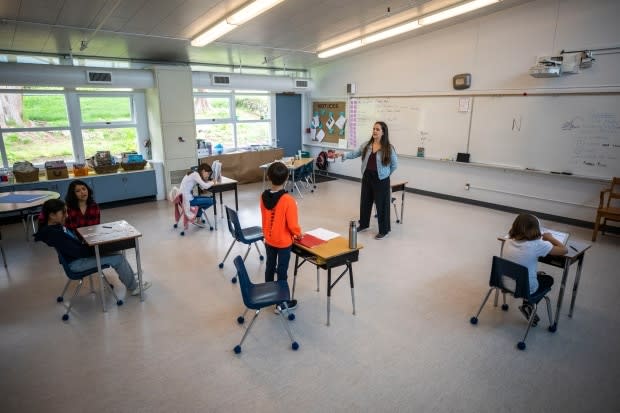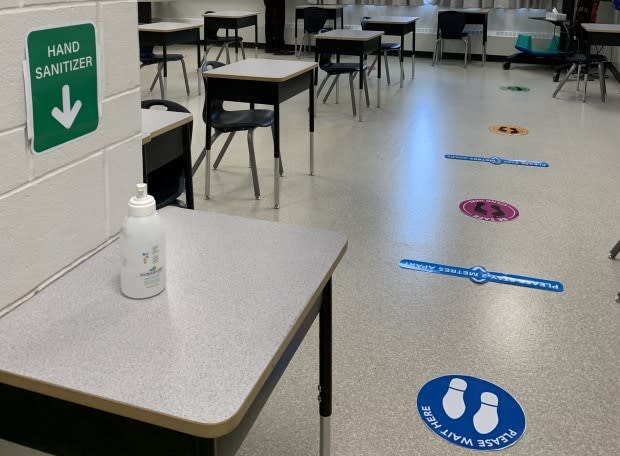What Ontario can learn from elsewhere about making schools safer from COVID-19
Going back to school means learning lessons and facing tests. Ontario will soon face a crucial test of whether it has learned from the mistakes and successes of other jurisdictions in preventing the spread of COVID-19 in schools.
There are plenty of examples of countries around the world that reopened schools for in-class instruction without significant increases in new cases of the novel coronavirus among students, teachers and staff, including Denmark and Finland.
There are also countries where significant outbreaks occurred in schools after reopening, notably Israel and South Korea.
From examining what has happened in these countries, the most fundamental principle that emerges is that the best way to lessen the likelihood of COVID-19 spreading through schools is by having a low infection rate in the community.
With a low infection rate as a baseline, prevention measures can be put in place in classrooms to reduce the risk of transmission even further.

"A combination of keeping student groups small and requiring masks and some social distancing helps keep schools and communities safe," says a recent article in the journal Science, which analyzed the strategies used in a range of countries.
Ontario's 72 school boards have been told to prepare three plans for September:
Full-time in-class teaching with COVID-19 prevention measures in place.
Full-time remote learning.
A hybrid that would see half the school population in class at a time while the other half learns online.
Education Minister Stephen Lecce has shifted from telling boards in June that he expected the school year to begin with the hybrid model to saying his preference now is for kids to be in class full-time.
Premier Doug Ford has repeatedly said he wants to see full-time school resume in September. Top officials at Sick Kids Hospital in Toronto and the CHEO children's hospital in Ottawa have called for children to return to class full-time in the fall.
To make it happen safely, experts say Ontario should draw on the measures used in other countries that have managed to keep a lid on the spread of COVID-19 in schools.

Adopting the hospital model of multiple layers of infection prevention and control is recommended by a range of public health experts, including Amy Greer, an epidemiologist and associate professor at the University of Guelph.
"The idea is to layer these different strategies in a way that gets us to a situation where any potential spread would be able to be quickly identified and contained, and minimize the risk of those outbreaks happening in the first place," said Greer in an interview with CBC News.
"The first layer is just keep it out of the school setting to the best of your ability," said Greer. That involves daily screening, making sure that kids do not come to school sick.
The next layer involves steps to lessen the chances of students and staff transmitting infections, which means physical distancing, hand washing and potentially masks.
Finally, if transmission does occur, schools can minimize the spread by reducing the amount of interaction among the school population.

That is captured by a concept called cohorting: separating students into small groups, perhaps 15 at the most, who spend their whole day in the same classroom with one teacher, take their lunch and breaks together, and do not mingle with anyone else in the school.
Cohorting would work more easily with the way elementary students are taught than with high school kids, who typically move around the school to several classrooms, each with different groups of students and different teachers.
There's some emerging evidence that teenagers have a greater tendency to spread COVID-19 than elementary-age students. Coupled with the fact that teaching teens online is far easier than teaching youngsters, that could mean Ontario takes a different approach to reducing the risk in high schools.
The Toronto District School Board, the province's largest, is considering a model that would see the high school year divided into "quadmesters" with students taking only two courses at a time in each nine-week session.
Every TDSB high school student would spend roughly half the day doing online learning, creating physical distancing by ensuring that no more than half the student body is in the building at once.

At the provincial level, Ontario has not yet landed on any particular prevention measures it wants school boards to take.
"This is a matter of a lot of discussion right now," said Dr. David Williams, the province's chief medical officer of health.
The province is looking at how other jurisdictions have fared with preventing COVID-19 infections in schools, Williams said during a news conference on Thursday.
"We want to pay attention to those to understand what worked, what were the challenges or the issues they faced,"
Asked what direction he is giving boards on safety measures, such as setting up classrooms in a way that provides physical distancing, Williams didn't offer any specifics. Rather, he posed questions.
"We want to look at these public health measures [already being practised in the community]. How would we integrate that into the school type setting to make it safe?" Williams said.

"How we would handle if there were concerns or issues or a possibility of some cases?" he added. "This is all in the process right now of being discussed."
Whatever prevention measures school boards put in place for September, public health officials will need to closely monitor school-based transmission.
"The outbreak has manifested itself in different ways in different countries, which is why the solution that we create for Ontario has to be sensitive to the way the outbreak has occurred in Ontario," said Dr. Michael Warner, medical director of critical care at Toronto's Michael Garron Hospital.
"We need to make sure that we are managing active infections in the community very well," said Greer, the University of Guelph epidemiologist.
"We need to be able to find them quickly, we need to be able to trace them and to isolate them," she added.
"That's going to reduce the risk that we're going to import potentially infected students or staff into the school setting."


